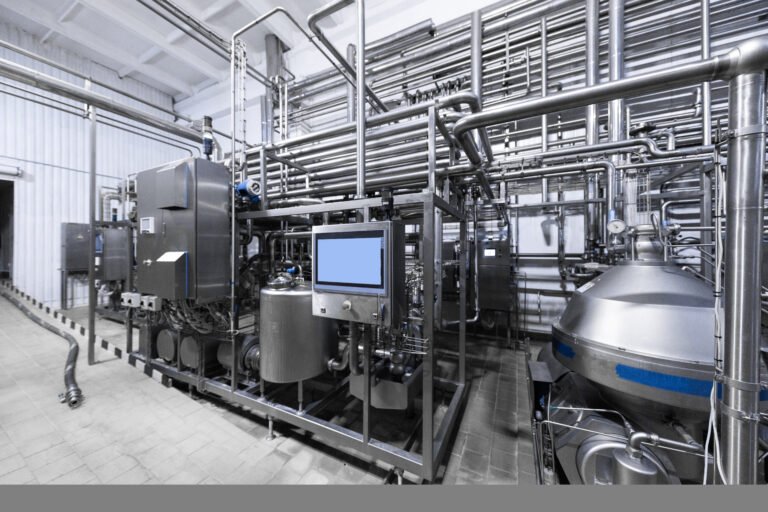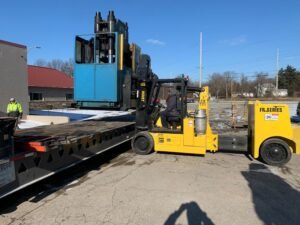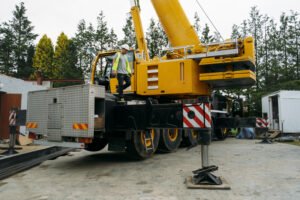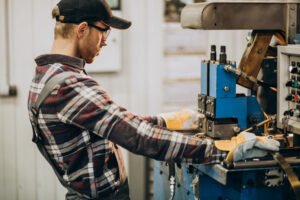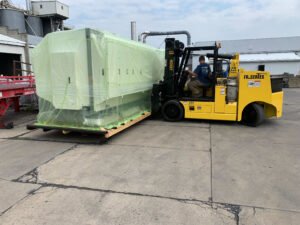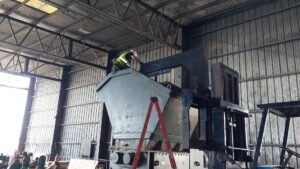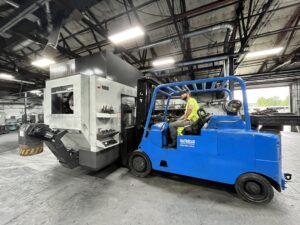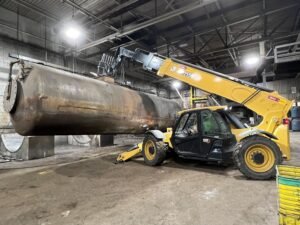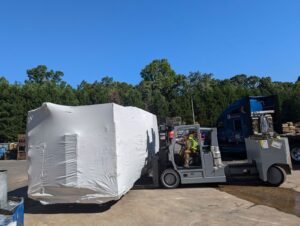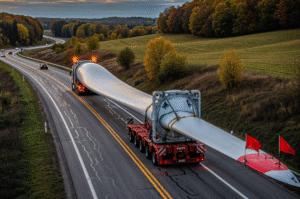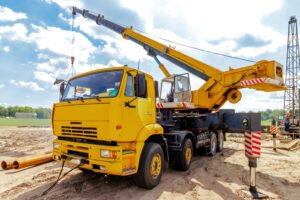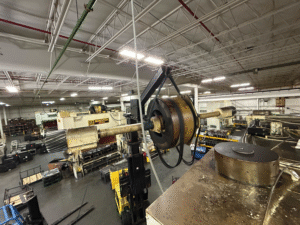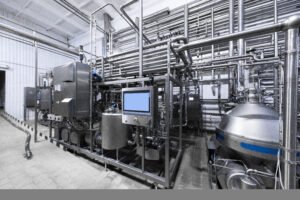Food processing facilities form the backbone of the global food supply chain. These plants are equipped with massive industrial machines that grind, mix, cook, package, and preserve products for consumer markets. Unlike smaller operations, a food processing facility is rarely static. Changing market demands, expansion opportunities, and compliance with stricter safety and quality regulations often require companies to relocate equipment either within the same facility or to an entirely new site.
Relocating heavy equipment in the food industry is far more complex than simply moving machinery from one point to another. The relocation process requires careful planning, technical expertise, adherence to strict hygiene standards, and precise coordination to minimize downtime and maintain productivity. Every step—from dismantling to reinstallation—must be executed with attention to detail to ensure food safety, regulatory compliance, and the seamless restart of operations.
This article explores the critical aspects of heavy equipment relocation for food processing facilities. It covers planning, safety, logistics, industry regulations, workforce coordination, and future trends, while offering insights into why partnering with specialized relocation providers is essential for success.
Understanding the Complexity of Food Processing Equipment Relocation
Machinery Specifics in Food Processing
Food processing facilities are equipped with specialized machines such as industrial mixers, conveyors, cookers, ovens, refrigeration systems, pasteurizers, and packaging lines. Each machine has unique installation requirements, electrical needs, sanitation standards, and operating procedures. Unlike standard manufacturing equipment, these machines must comply with food safety laws that govern cleanliness, contamination control, and handling of consumables.
Relocating such equipment is not only about moving weight but also about preserving integrity. Even minor alignment errors or improper reassembly can affect food quality, introduce safety risks, or create compliance violations.
Regulatory and Safety Demands
Food processing is heavily regulated by organizations such as the FDA, USDA, and international equivalents. During relocation, companies must ensure equipment remains compliant with safety and hygiene standards. Any lapse can result in penalties, product recalls, or production delays. Additionally, occupational safety rules—such as OSHA requirements—must be observed during dismantling, transport, and reinstallation.
Planning for Successful Relocation
Initial Assessments
The foundation of a successful relocation begins with a comprehensive site and equipment assessment. Teams must evaluate the dimensions of machinery, assess weight capacities, map electrical and plumbing needs, and identify potential hazards in dismantling.
Assessments also include evaluating the destination site. Is the new facility structurally prepared to accommodate heavy loads? Are utility connections compatible with the relocated machines? Answering these questions early prevents delays and costly retrofits later.
Creating a Detailed Relocation Plan
Planning includes defining the scope of work, scheduling equipment downtime, preparing permits, arranging logistics, and coordinating with vendors. The plan must account for every stage: dismantling, cleaning, packaging, transport, reinstallation, calibration, and validation. Because food plants often run on tight schedules, relocation plans must align with production timelines to minimize downtime.
Workforce Coordination
Relocating heavy food processing equipment requires diverse expertise: riggers, electricians, millwrights, sanitary engineers, and food safety specialists. Coordinating these teams is vital to avoid bottlenecks. Workforce management also includes training staff to operate machinery safely post-relocation and ensuring compliance audits are conducted before production restarts.
Dismantling and Preparation
Step-by-Step Breakdown
The dismantling stage is one of the most delicate. Machines must be carefully shut down, disconnected from utilities, and disassembled into manageable parts. Sanitation is critical—food equipment must be thoroughly cleaned before dismantling to prevent contamination during transport.
All moving parts, sensitive electronics, and calibration instruments must be labeled, documented, and securely packed. Maintaining detailed records ensures precise reassembly.
Hygiene and Contamination Control
In the food industry, even dust particles or microbial residues can compromise equipment integrity. During relocation, companies must follow strict hygienic protocols. This includes covering open machinery surfaces, sealing pipes, and using sanitary packaging materials. Preventing cross-contamination protects both the company’s reputation and consumer health.
Transport and Logistics
Moving Oversized Loads
Heavy food processing machinery often qualifies as oversized loads, requiring specialized trailers, escorts, and permits. Route planning is critical to avoid obstacles such as bridges with weight restrictions or tight urban roads. Coordination with local authorities ensures safe passage without disrupting traffic.
Climate and Vibration Considerations
Transporting sensitive food machinery requires attention to environmental conditions. Extreme temperatures or vibrations during transit can damage delicate components. Specialized vehicles with shock absorption and climate controls are often necessary. Transport teams also monitor positioning to prevent imbalance or shifting during the journey.
Installation and Reassembly
Site Readiness
Before machines arrive, the destination site must be fully prepared. Floors reinforced for load-bearing, electrical and plumbing systems aligned, and sanitation zones established. Without this readiness, installation teams face delays that could extend downtime significantly.
Reassembly Precision
Reinstallation requires skilled technicians to reassemble machines in exact configurations. This process includes reconnecting utilities, calibrating systems, and verifying automation controls. Precision is vital—small alignment errors can lead to uneven mixing, improper sealing, or contamination risks.
Testing and Validation
Before resuming production, relocated equipment undergoes rigorous testing and validation. This includes dry runs, safety inspections, compliance audits, and sanitation checks. Testing ensures the machinery meets both operational efficiency standards and regulatory requirements before full-scale production restarts.
Challenges in Heavy Equipment Relocation for Food Processing
Minimizing Downtime
Every hour of lost production can translate into substantial financial losses. Balancing efficiency with safety is one of the biggest challenges in relocation projects. Companies must carefully schedule moves during off-peak periods or coordinate phased relocation to maintain partial operations.
Maintaining Food Safety Standards
Relocation introduces numerous contamination risks. Companies must implement strict protocols for cleaning, packaging, and reinstallation. Additionally, post-relocation audits are mandatory to verify compliance with food safety certifications such as HACCP and ISO 22000.
Managing Costs
Relocation projects are capital-intensive. Beyond direct moving expenses, hidden costs arise from downtime, retrofits, and compliance upgrades. Effective budgeting and partnering with experienced service providers help companies stay within financial limits.
The Role of Professional Relocation Service Providers
Why Expertise Matters
Relocating heavy equipment in food processing requires more than physical strength. It demands technical expertise, industry knowledge, and specialized equipment. Professional relocation companies bring project management skills, trained riggers, and compliance experts who ensure seamless execution.
Case for Outsourcing
Outsourcing relocation reduces risks, ensures regulatory compliance, and minimizes downtime. Professional service providers maintain insurance coverage, bring advanced tools, and apply proven methodologies that in-house teams often lack.
Alltracon: Trusted Partner in Food Processing Equipment Relocation
When it comes to heavy equipment relocation for food processing facilities, Alltracon stands out as Ohio’s most trusted service provider. With decades of experience, a skilled workforce, and state-of-the-art rigging and transport solutions, Alltracon ensures safe, efficient, and compliant equipment moves. Their commitment to minimizing downtime and safeguarding food safety makes them the go-to choice for businesses seeking reliable relocation services.
Future of Equipment Relocation in the Food Industry
Automation and Digital Tools
Emerging technologies are transforming relocation planning. Digital twins and 3D modeling allow companies to simulate equipment moves before execution. Automation tools streamline dismantling and reassembly, while IoT sensors track equipment conditions during transport.
Sustainability Considerations
As industries embrace sustainability, equipment relocation strategies now factor in energy efficiency, waste reduction, and environmental impact. Companies increasingly reuse materials, optimize logistics routes, and adopt eco-friendly packaging during relocation.
Globalization and Cross-Border Moves
With food companies expanding globally, cross-border relocations are becoming more common. This introduces additional challenges such as customs clearance, international compliance, and cultural considerations. Future relocation services will focus on offering end-to-end solutions that address these complexities.
Conclusion
Heavy equipment relocation in food processing facilities is a high-stakes endeavor that requires meticulous planning, specialized skills, and strict adherence to safety and regulatory standards. From dismantling to reassembly, every stage impacts productivity, compliance, and ultimately, consumer trust.
By investing in professional relocation services and leveraging modern technology, companies can minimize downtime, safeguard food safety, and achieve long-term operational efficiency. As the food industry continues to evolve, the ability to relocate equipment smoothly will remain a competitive advantage.
For businesses looking to relocate heavy food processing machinery with confidence, Alltracon provides the expertise, equipment, and dedication needed to ensure success.
